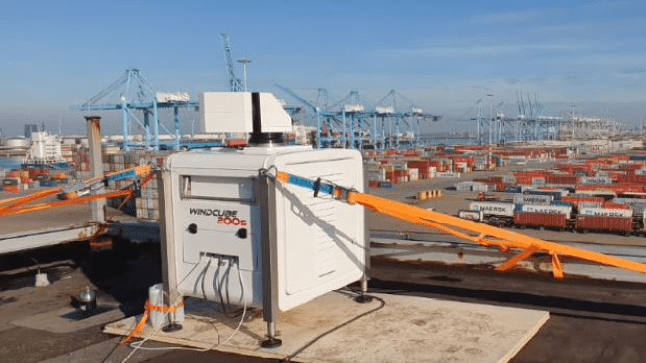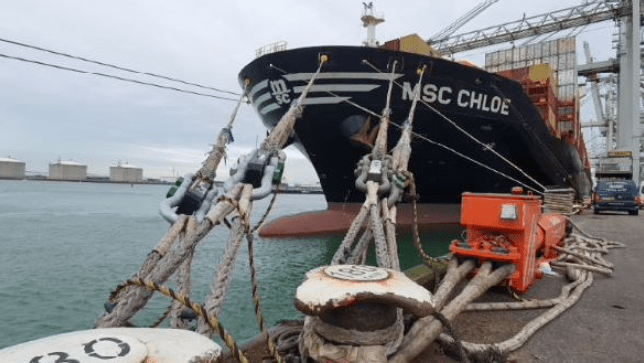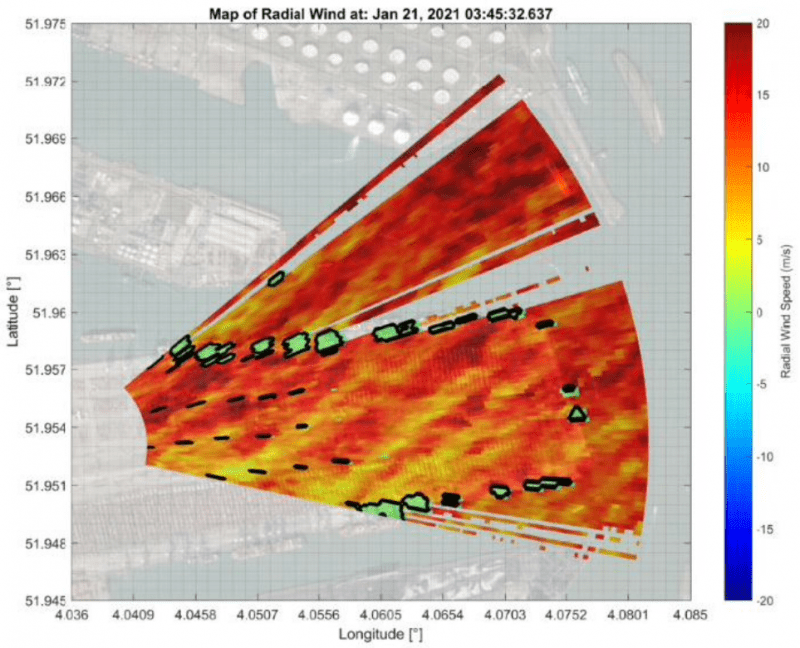On January 21, MARIN measured the severe wind conditions across the ECT Delta terminal in Rotterdam in combination with the motions and mooring line loads of MSC CHLOE, a 10,000 TEU container vessel moored at the quayside. The measurement campaign is part of the WINDLASS JIP which is aiming at the wind load modelling on high windage vessels in the port environment.
WIND VELOCITIES AND MOORING LINE LOADS
The 3-D wind field approaching the vessel was measured by means of a lidar scanner located on a building on the SW end of the terminal. The scanner measured the wind velocities in the line of sight during sweeps over a horizontal sector at 3 elevations with a range of 2 km. From these radial wind speeds, the wind vectors in the measured volume are reconstructed.
In close co-operation with terminal operator ECT, vessel operator MSC and linesmen KRVE, the mooring lines of MSC CHLOE were instrumented with load cells and four ShoreTension systems were deployed. The vessel motions were measured by means of two dedicated cameras located on the quayside. All signals were recorded simultaneously.
COMPUTATIONAL TOOL
This valuable data set is used in the WINDLASS JIP to compare with numerical wind simulations, Dynamic Mooring Analysis and for improving the modelling of wind loads on ships. Within the JIP, which is supported by port authorities, operators, class and engineering contractors, a computational tool will be delivered for operational use in ports.
INTERESTED?
www.marin.nl/jips/windlass or contact Henk van den Boom

